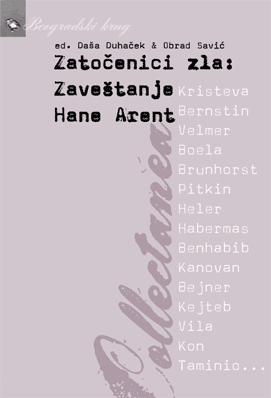
We kindly inform you that, as long as the subject affiliation of our 300.000+ articles is in progress, you might get unsufficient or no results on your third level or second level search. In this case, please broaden your search criteria.

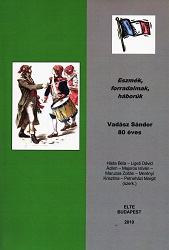
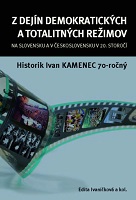
Ochrana národnostných a rasových menšín, zakotvená vo versaillských mierových zmluvách a vzťahujúca sa i na Nemecko, nielenže v tejto krajine od roku 1933 prestala platiť, ale do popredia sa dostal nový fenomén – úplné popretie rovnosti človeka pred zákonom, predovšetkým na základe rasového princípu. Pri transformácii demokratického politického systému na nový – totalitný – došlo teda v chápaní vzťahu politiky a práva k zásadným zmenám. Nemeckí národní socialisti, vychádzajúc z ideologických zásad Hitlerovho Mein Kampf presadili názor, že zákony nepomôžu, dôležitejšia je vraj „instinktivně cítěná potřeba německého národa“. V týchto intenciách vyhlásil roku 1933 poslanec ríšskeho snemu za NSDAP Dr. Freisler: „Co pak tu záleží na nějakém rozhodnutí státního dvora! Pryč se směšnou posvátností paragrafů! Národ přece neobětuje vlastní život pro pár paragrafů.“ Pre tých, ktorým totalitná ideológia imponovala, to znamenalo prekročenie morálneho Rubikonu. „Podle nacistické theorie je zákon toliko zbraní v politickém boji. Kerrl, státní úředník, který se stal ministrem spravedlnosti v Prusku, tvrdil v prvních dnech revoluce, že se zákon musí zbavit posedlosti ‘mrtvou objektivností’, tohoto žalostného dědictví liberalismu. Hitler tento názor schválil.“
More...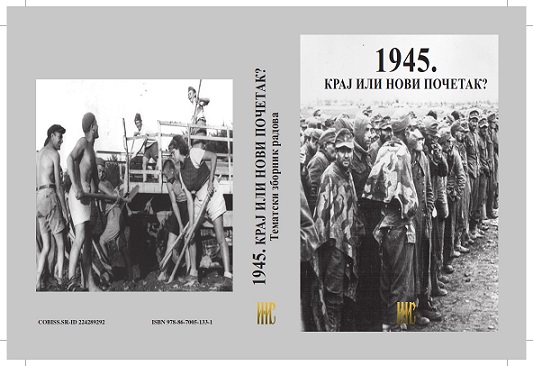
The activity of the Union of Jewish Religious Communes in Yugoslavia (henceforth: the Union) was renewed on October 22, 1944. The Union was reconstructed on the basis of the pre-war organization that went into the same activities and bore the same name. Under the law valid at the moment the Union had been set up, it was treated as a religious community. In keeping with the changed social and political conditions, it was necessary to start the process of adapting to the new reality. The change of status and character of the post-war Jewish community was officially adopted at the sixth post-war conference of the Union of Jewish Communes in September 1952. This was made official by removing the word “religious” from the official name of the Union. After WWII there were some 4,400 Jews who had survived the war as civilians and members of the partisan movement in the whole territory of Yugoslavia. The population that had survived the horrors of the war in the Yugoslav territory was enlarged through arrival of refugees and POWs who had been in camps in occupiers’ or neutral countries. They were registered with the Union. Apart from Yugoslav citizens, among the refugees who contacted the Union there were also citizens of 18 European and non-European countries: of Germany, Switzerland, Turkey, USA, UK, Columbia, Spain, Syria, France and Poland. The Union of Jewish Religious Communes of Yugoslavia organized their lives too and took care of them, as well as of Yugoslav nationals.
More...
Prošlog četvrtka, kada je dopisnicima iz Kijeva već ponestalo jezivih opisa za sukobe na Majdanu posle 18. februara, koji je samo nakratko važio za najkrvaviji dan u istoriji nezavisne Ukrajine – dopisnici iz Silicijumske doline javili su da je Jan Kum preko noći postao milijarder. Ukrajinski Jevrejin koji je 1992. sa mamom i bakom, jer za očevu kartu nije bilo para, otišao iz neke blatnjave selendrice kod Kijeva čim je postalo moguće napustiti istočni lager, Kum je ugovor onaj vrednijoj akviziciji startap projekta u istoriji internet industrije potpisao na vratima socijalne službe u Kaliforniji, pred kojim je godinama stajao u redu za bonove za hranu.
More...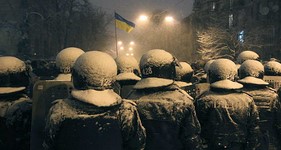
Ovih dana i ja, kao i mnogi drugi, razmišljam o Ukrajini. Posebno o tome kako njima, građanima (sic!) Ukrajine, polazi za rukom nešto na čemu im mnogi građani Rusije zavide. Njima već danima uspeva da masovno i uporno brane svoje građansko dostojanstvo, potvrđuju svoju građanski odgovornost i svoju društvenu zrelost.
More...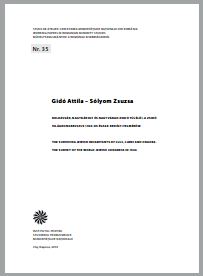
The Romanian Section of the World Jewish Congress (henceforth: WJC) conducted a national survey among the Jewish survivors of the Holocaust in 1946. The objective of the survey was to assess the human and material losses and record the grievances suffered by the surviving Jewish population. In addition to this the statistical data gathered was intended to serve as a basis during the negotiations of the Peace conference ending World War II and for compensation claim. This study analyses the survey and its results regarding three towns from Northern Transylvania (Cluj, Carei and Oradea) which belonged to Hungary during the Holocaust period.
More...
Se židovskou tematikou se setkáváme v našich zemích již od 10. století, kdy do českých zemí přicházeli první Židé. Od té doby se Židé opakovaně stávali cílem útoku ostatních, často přicházeli nejen o svůj majetek, ale i o své životy. Vše vyvrcholilo druhou světovou válkou a holocaustem. Historie židovského obyvatelstva i jeho každodenního života je bohužel v rámci středoškolského vyučování opomíjena – převážně z časových důvodů. Proto je velmi důležité i v dnešní době, kdy antisemitismus není výjimkou, aby se studenti o židovské tematice dozvěděli a společně o ní diskutovali. Díky níže popsaným programovým blokům se se studenty můžeme dotknout nejen perzekucí židovské komunity, transportů a poválečné situace, ale také židovských tradic a zvyků.
More...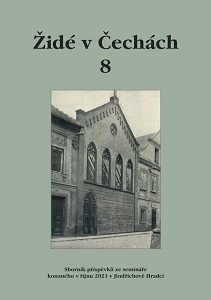
This paper examines the circumstances under which Jews from the Czechoslovak part of Těšín (Cieszyn, Teschen) Silesia – deported by the Nazis to the town of Nisko on the San River in October 1939 – found themselves in the territory of the Soviet Union, where, with few exceptions, they were subjected to repression by the Soviet regime. It focuses on the specific fate of individual Jews in connection with their imprisonment, deportation, and forced labour in Soviet labour camps (Gulags), while also pointing to the possibilities and chances of survival in these inhuman conditions. The paper draws primarily on a study of former NKVD materials that have been preserved in Ukrainian state and security archives.
More...
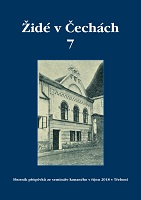
Otto Weissberger, a prominent industrialist born in 1864, significantly influenced Pilsen's society through his business acumen and social contributions. Despite facing anti-Semitic sentiments, he established a successful factory producing bronze and graphic colors, which became a European leader. Weissberger was deeply involved in various professional and social organizations, advocating for industrial and social progress. His life took a tragic turn during World War II when he and his family were persecuted by the Nazis. Weissberger died in Terezín in 1944, while his wife survived the war but faced post-war challenges. His daughters, Eliška and Anna, were executed for their resistance activities. The family's legacy is preserved through detailed archival research, highlighting their resilience and contributions to Pilsen's history. This study underscores the importance of documenting and preserving the history of Jewish families in Bohemia.
More...
Jiří Weil's tenure at the Jewish Museum in Prague from 1943 to 1959 was marked by his meticulous cataloging of artifacts from destroyed synagogues and Jewish communities. Despite being arrested by the Gestapo in 1944, Weil continued his work in the museum, contributing significantly to the preservation of Jewish heritage. His involvement in the museum's planning meetings and his efforts in organizing exhibitions and publications were pivotal. Weil's post-war activities included rescuing Jewish books from Terezín and other locations, and his work inspired many of his literary creations. His resilience and dedication to documenting Jewish history are evident in his extensive archival contributions and his role in publicizing the Terezín children's drawings. Weil's legacy is preserved through his numerous studies, translations, and the exhibitions he helped curate, highlighting the importance of his work in the context of Jewish cultural preservation.
More...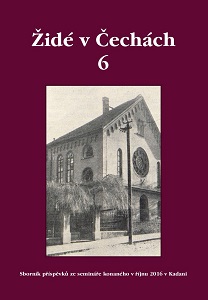
In recent years, a comprehensive archival survey in the Czech Republic, under the auspices of the Jewish Museum in Prague, has significantly contributed to the creation of an information database capturing archival sources on the history of European Jewish populations. This research, focusing on Jews in the Sudetenland from 1848 to 1945, draws from projects like Yerusha and the European Holocaust Research Infrastructure. The study delves into the archival collections of the State District Archive in Litomìøice, highlighting documents from various local and regional authorities. These records, spanning from state administration to municipal self-government, provide insights into the Jewish community's participation in industrial, cultural, and political life. The archive also houses unique collections, such as the Terezín Ghetto's technical and construction department, which reflect the transformation of the town into a Jewish ghetto during World War II. The preservation of these documents is crucial for understanding the individual and collective experiences of Jews in the region, emphasizing the importance of archival research in reconstructing historical narratives.
More...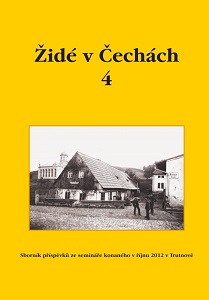
The document details the Jewish population in the Žacléř region, highlighting their presence from the late 19th century through the interwar period and World War II. It notes the decline in the Jewish population due to emigration and the impact of the Holocaust. The text provides statistical data from various censuses, showing the small and decreasing number of Jews in the area. It also discusses the establishment of forced labor camps during World War II, where Jewish women were subjected to harsh conditions and forced labor. The document mentions specific families and individuals, their contributions to local industries, and the tragic fate of many during the Nazi occupation. Post-war, the Jewish community's remnants faced significant challenges in rebuilding their lives. The narrative concludes with reflections on the lasting impact of the Jewish community on the region's history and culture.
More...
The document chronicles the life of Herbert Poláček, a Jewish man from Pilsen, who became a double exile, first fleeing from Nazism and later from Communism. Born in 1906, Poláček's family had deep roots in Kolín's Jewish community. He pursued a legal career in Prague before escaping to the UK in 1939. His family faced severe persecution during the Nazi occupation, with his parents perishing in concentration camps. After World War II, Poláček returned to Czechoslovakia, only to flee again in 1949 due to the Communist regime, eventually settling in the UK. The narrative highlights his contributions to the Jewish community, his professional endeavors, and the family's struggles and resilience through the 20th century's tumultuous events.
More...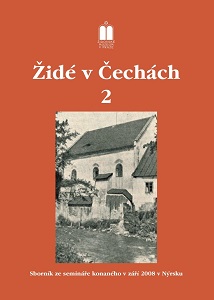
The document discusses the plight of Jewish refugees from Galicia and Bukovina during World War I, who were forced to flee their homes due to the conflict between Russian and Austro-Hungarian armies. These refugees traveled in large numbers to the interior of the Habsburg monarchy, primarily to Vienna and various regions in the Czech lands. They faced numerous hardships, including long journeys on foot or in overcrowded trains, and were often housed in inadequate conditions. The state and charitable organizations provided some support, including food, clothing, and medical care. Refugees were also subjected to health inspections and quarantines to prevent the spread of infectious diseases. Despite these efforts, many refugees suffered from poor living conditions and high mortality rates. The document highlights the significant impact of these refugees on local communities, both positive and negative, and the ongoing challenges they faced even after the war ended.
More...
The Jewish communities in the Teplice and Duchcov districts were significant in the early 20th century, with Teplice having the largest community. Despite facing challenges, including the Great Depression and World War II, these communities maintained their cultural and religious practices. The Teplice synagogue and Jewish ghetto were destroyed, but the community's legacy persists through historical records. The Jewish community in Duchcov, although smaller, also played a vital role in the region's history. The Sobědruhy community, formed by families expelled from Teplice, had a strong presence and contributed to the local economy. The Jewish cemetery in Sobědruhy, established in the late 17th century, remains a significant historical site.
More...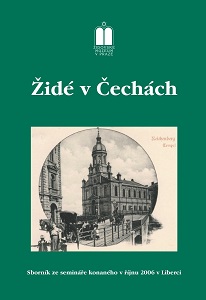
This analysis looks into the refugee policy of Czechoslovakia during the interwar period, particularly focusing on Jewish refugees fleeing Nazi persecution. Initially, Czechoslovakia was seen as a haven for refugees from Germany and Austria, with a relatively open policy. However, over time, the policy became more restrictive, especially towards Jewish refugees from Eastern Europe. The state distinguished between political and economic refugees, often denying entry to those deemed economically motivated. The document highlights the challenges faced by refugees, including legal and economic barriers, and the role of international and domestic organizations in providing support. It also discusses the impact of antisemitism and economic crises on refugee policy, and the eventual shift towards a more exclusionary stance as the political situation in Europe deteriorated.
More...
This analysis looks into the role of the Extraordinary People's Court in Litoměřice from 1945 to 1948, focusing on the prosecution of crimes committed during the Holocaust and the post-war period. It highlights the challenges in addressing anti-Semitism and Jewish issues in the decisions of post-war retribution courts in the Czech lands. The research project "Jewish Issues and Anti-Semitism in the Light of Retribution Courts (1945-1948)" reveals that the punishment of war crimes against Jews was not a central concern for these courts. The document discusses the varying methods of researchers, the differences in criminal acts against Jews in the Protectorate of Bohemia and Moravia versus the Sudetenland, and the specific legal provisions for crimes against Jews. It also covers the role of Jewish community leaders, the involvement of local collaborators, and the difficulties in achieving justice for Jewish victims. The document underscores the importance of understanding the historical context and the limitations of the retribution courts in addressing Holocaust-related crimes.
More...
The document delves into the history of the Jewish community in Teplice, which was once the third largest in Bohemia after Prague and Pilsen. It traces the community's origins back to the 15th century, highlighting periods of growth and persecution. The Jewish community in Teplice faced various challenges, including high taxes and restrictive regulations imposed by local authorities. Despite these hardships, the community thrived, engaging in various trades and establishing important institutions such as synagogues, schools, and hospitals. The document also discusses the impact of the Thirty Years' War, the influence of the Clary-Aldringen family, and the effects of the Enlightenment and Josephine reforms on the community. The Jewish population in Teplice continued to grow and integrate into the broader society, contributing significantly to the local economy and culture. However, the rise of antisemitism and the events leading up to World War II had devastating effects on the community, culminating in the destruction of the synagogue and the persecution of Jewish residents during the Holocaust. The post-war period saw efforts to rebuild the community, but many survivors emigrated, leaving behind a rich but fragmented legacy.
More...